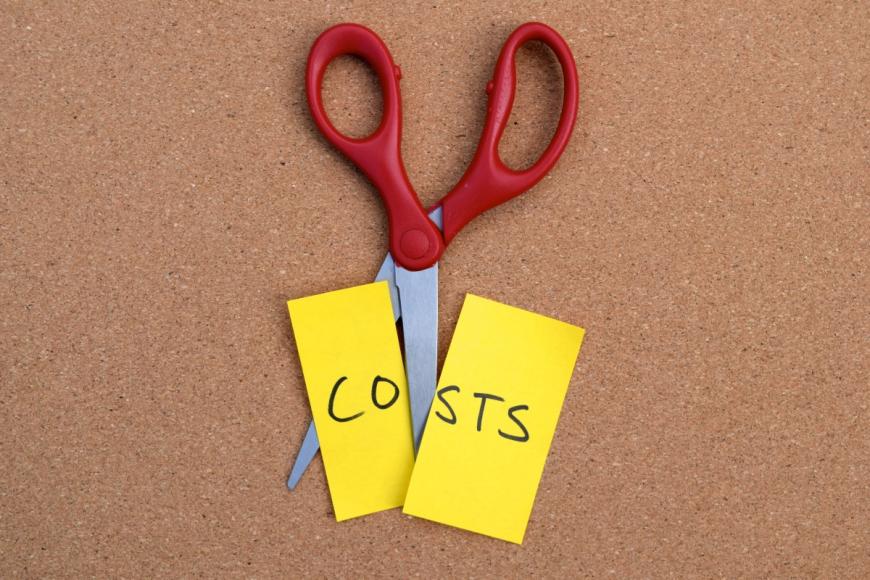
Five ways to reduce expenses
Putting together a budget is essential in managing household finances, but it is only the first step. The next step is to put that budget to the test by calculating your true monthly expenses. When tracking your spending, you might notice that even small expenses can create large roadblocks towards you balancing your budget and building a solid emergency savings fund. Inflation has made it even more challenging to stay on top of household finances. If you’re looking for ways to regain control of your budget, learning how to reduce expenses can be a great first step. Here are five ways to do so.
1) Utilize the 50/30/20 Rule:
After tallying all of your monthly expenses, you might realize that you are going a bit overboard in one major category. The 50/30/20 rule gives you a framework for where to cut back. This rule consists of dividing up your monthly household net income into three categories:
- 50% for needs (e.g., housing, utilities, groceries)
- 30% for wants (e.g., monthly subscriptions, entertainment, dining out)
- 20% towards savings and/or paying off high interest debts
To get started with this rule, first you will need to determine your total household net income. Let’s say you bring home each month $3,500 from a full-time job and another $1,000 from a part-time job. That gives you a total monthly income of $4,500.
Then you would implement the 50/30/20 rule by calculating the spending thresholds, $2,250 for needs ($4,500 x 50%), $1,350 for wants ($4,500 x 30%) and $900 for savings & debts ($4,500 x 20%). Nerdwallet has a calculator that explains this rule in-depth and that you can use to simplify this process.
Now that you have determined what your spending amounts are within these three categories, you will want to take a look at your current spending and make adjustments as needed. It is highly recommended that you start with the “wants” (30%) area, as those expenses are not crucial to meeting your basic needs and ensuring financial wellness.
2) Prioritize Your Spending
Similar to the 50/30/20 rule, you will want to figure out which line items are needs vs. wants. However, instead of simply breaking them up by three categories and basic percentages, you just group them into categories ranging from the highest to lowest priority:
- Survival Needs: These are your top priority expenses – those you make sure to pay before affording any others; include just three or four. Ensure you have covered your need for shelter and security. This typically involves paying your rent or mortgage, electricity, water, sewer and trash bills.
- Critical Wants: This might include things like cell phones and internet service, child care, debt payments (often for previously purchased survival needs or critical wants) and transportation (e.g. car payment, fuel, insurance and maintenance).
- Lifestyle Choices: These types of expenses might include dining out; stopping at the gourmet coffee shop; paying for a movie, sports or other media streaming service; purchasing fashion and lifestyle clothing subscriptions; and delivery services.
- Trivial Wants: This category includes fishing trips, country club or other membership(s) and maybe that nice new Harley you’ve always craved. Purchasing fashionable clothing or accessories, paying for a tattoo, upgrading your tech gadgets and paying for gifts to give to others all qualify for this category, too.
- Long-term Wishes: Saving up to start a business, investing in a child’s college education and putting money aside for a big family vacation all fit well within this section.
Similar to the 50/30/20 rule, after you prioritize your expenses within these categories, see if you need to make cuts. You will want to look at some of the lower priority categories, starting with lifestyle choices and trivial wants.
3) Keep Impulsive Spending in Check:
While putting in systems and prioritizing your spending are great ways to reduce your spending, they do not always address the underlying causes of the strain within one’s household budget. Sometimes it is simply looking at impulsive purchases you might make. For example, random trips to the vending machines at work or regular purchases of soda on the go at the gas station are easy to do. However, like all small purchases, they add up, and this ultimately leads to leaks in your budget.
The first step of keeping impulsive spending in check is by getting into the habit of tracking EVERYTHING you spend, regardless of how much it is. Here are several tools you can use.
- Our free Weekly Spending Tracker tool lets you to write down all your expenses each day and add them up at the end of the week.
- The Consumer Financial Protection Bureau has a monthly spending tracker that automatically tallies your expenses at the end of the month.
- There are several smart phone apps that you can explore: mint.com, You Need a Budget, Unsplurge, Quicken, LevelMoney, Wally, and GoodBudget.
4) Utilize Discount Options:
Discount options can be easily overlooked, as they often appear as spam in our email or junk mail in our mailboxes. Take a moment to look at some of those coupons; you could take advantage of massive savings on everything from groceries to oil changes. There are also discount sites such as Groupon, Living Social or Coupons.com. Also, check with your employer’s human resources department to see if you have special discounts as part of your employee benefits package.
5) Check for More Affordable Options for Priority Expenses:
Important expenses such as insurance, cell phone or internet services can easily contribute to leaks in one’s monthly budget. There might be cheaper alternatives. For example, shop around for competitive rates on auto and homeowner’s/renter’s insurance, or bundle them together with the same company. Ask your current insurance company what bundling discounts they might offer, as they do not always tell you about them upfront.
If you are looking for additional suggestions to reduce expenses and create a workable budget, LSS Financial Counseling has trusted, certified and nonjudgmental financial counselors who can provide support. To set up a free, confidential appointment, call 888.577.2227, or get your support online.

Author Ray McCoy is a Certified Financial Counselor for LSS Financial Counseling.
